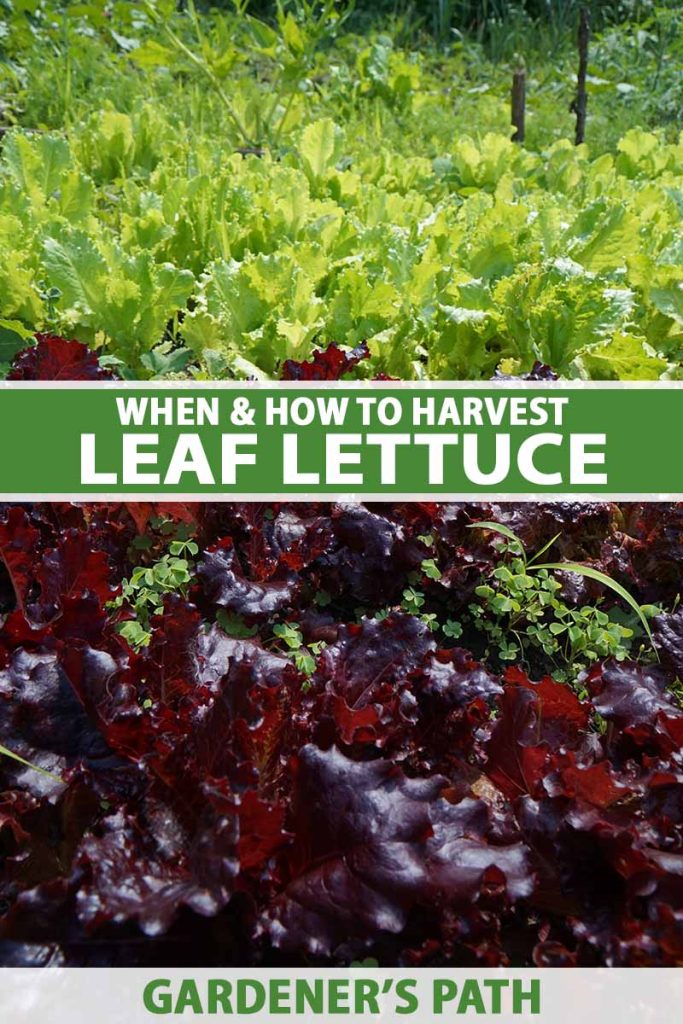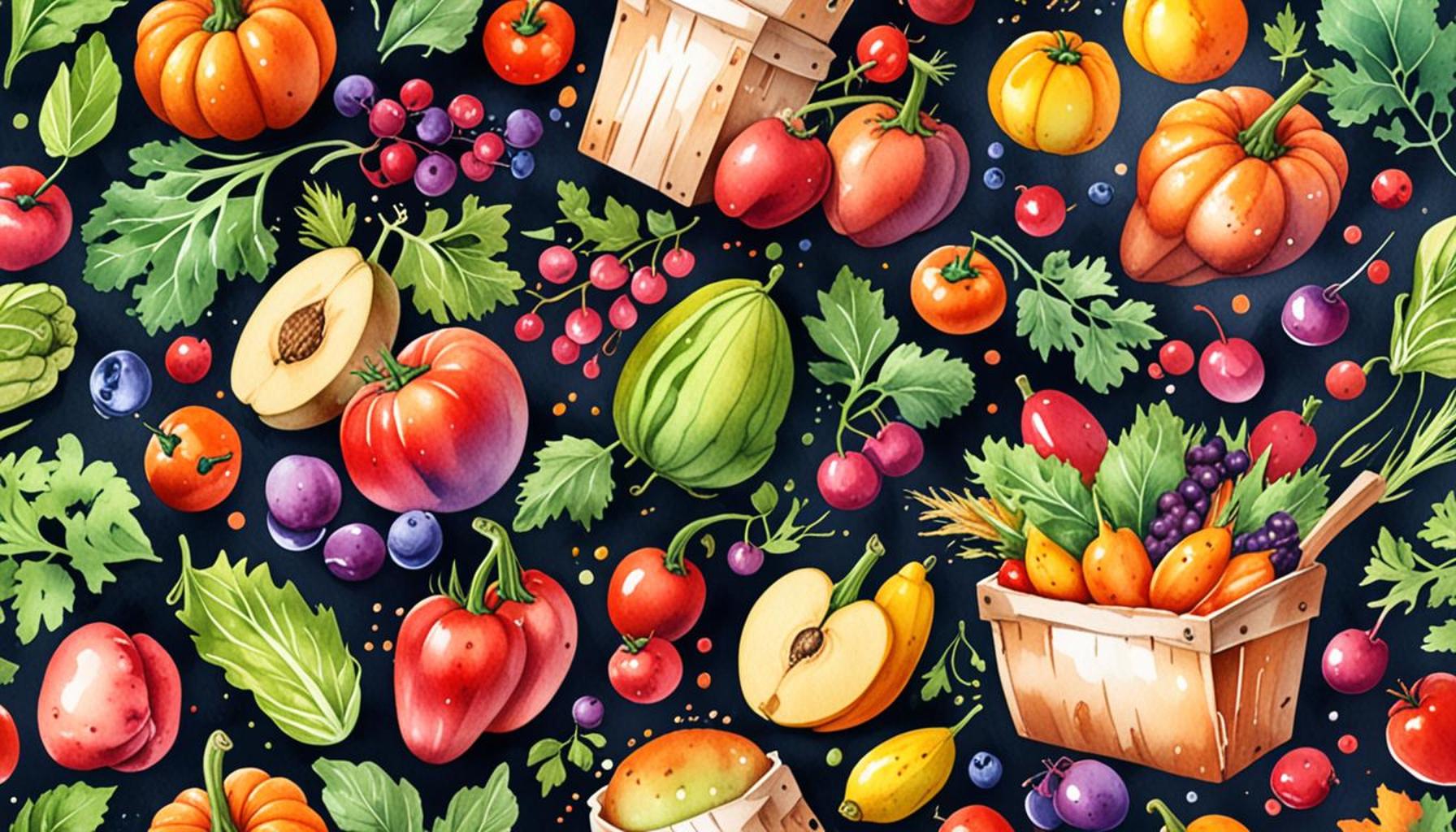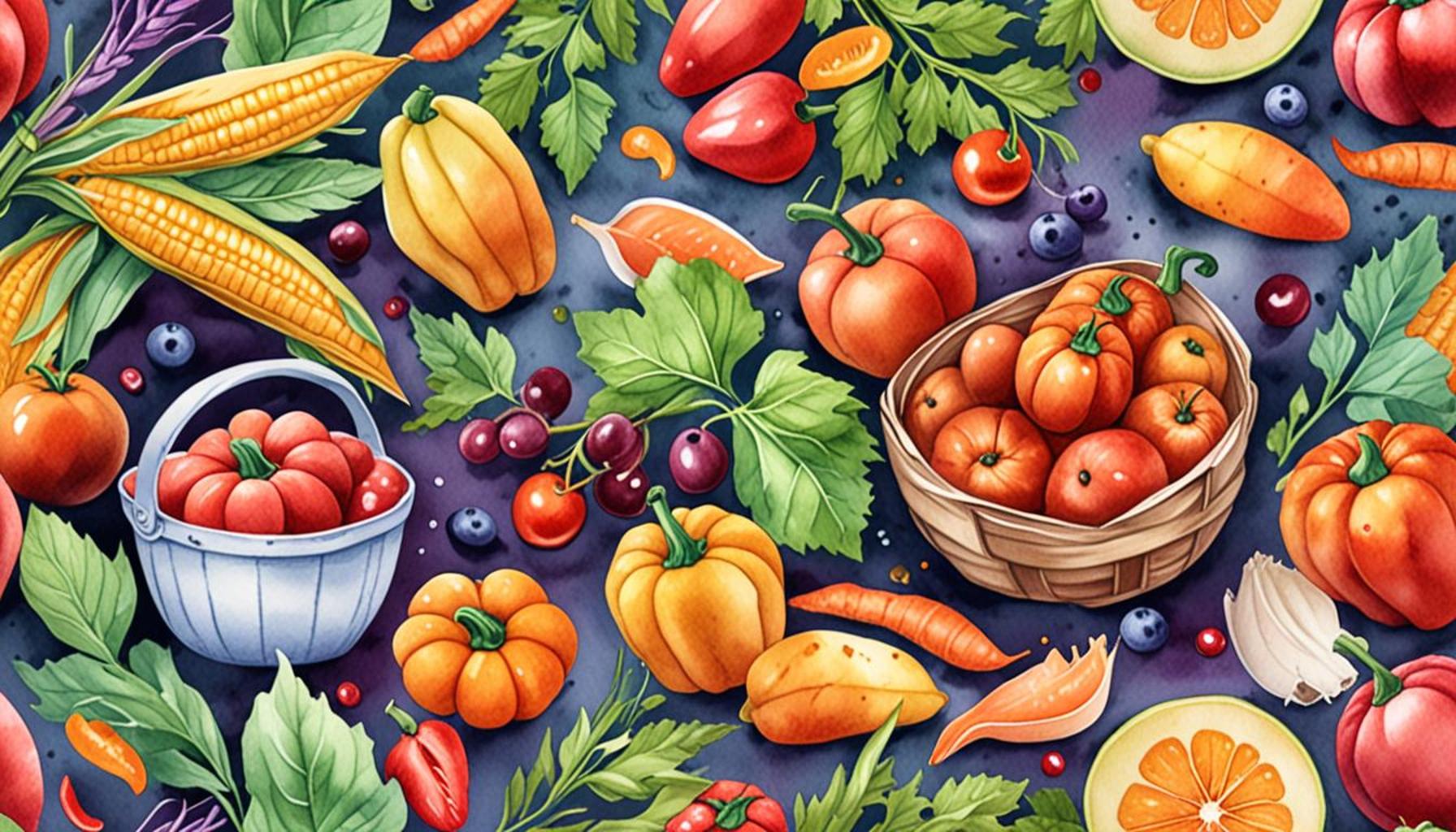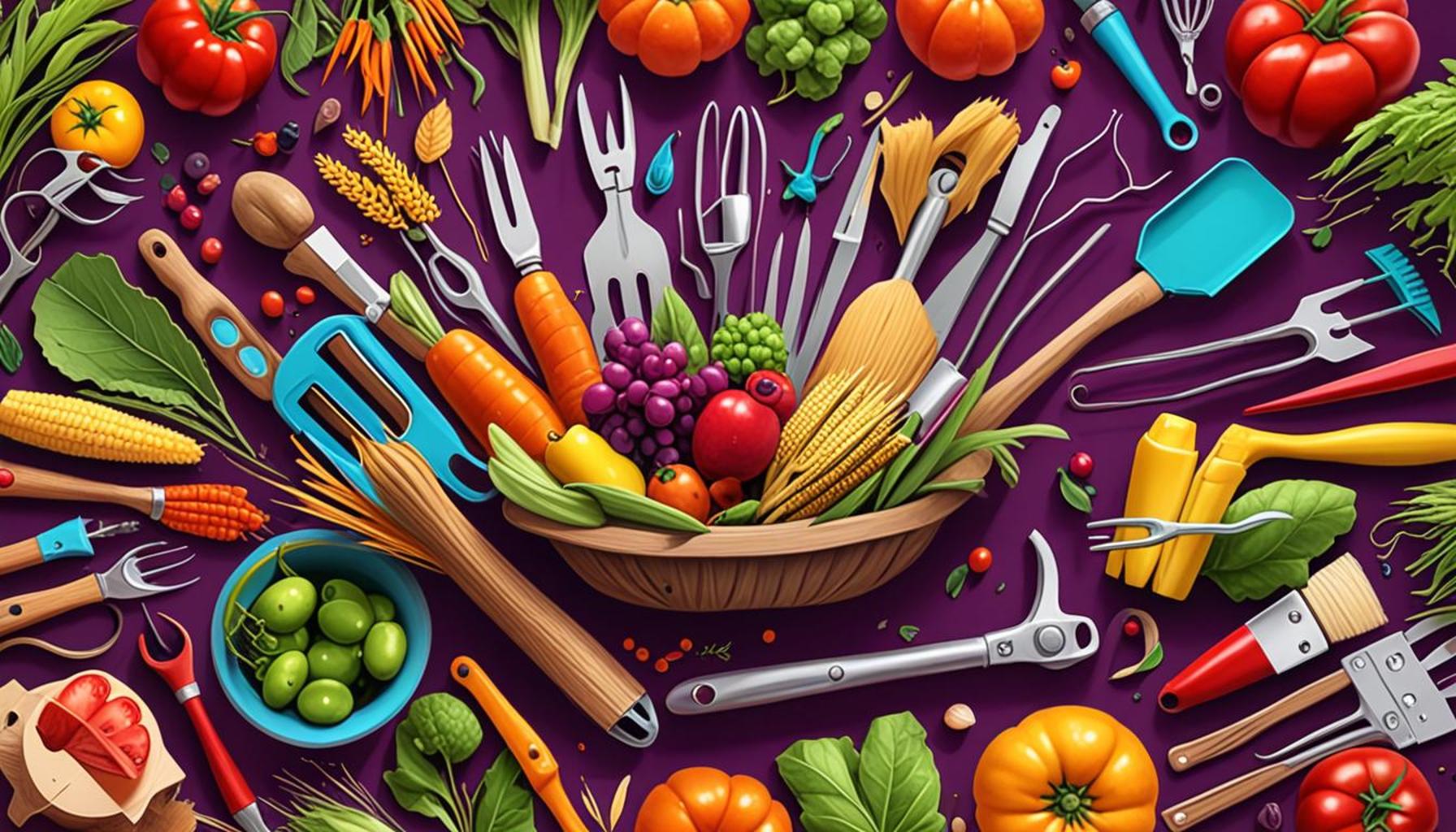Harvest Strategies: How to Plan Your Harvest to Maximize Flavor and Nutrition of Home-Grown Foods

Understanding the Optimal Time for Harvesting
In the realm of gardening, the adage “timing is everything” rings particularly true. Knowing the precise moments to harvest your fruits and vegetables can dramatically enhance both their flavor and nutritional value. This knowledge not only rewards your hard work in the garden but also enriches your culinary experiences. By exploring thoughtful planning and strategies, gardeners can maximize the fruits of their labor.
Flavor Maximization
Selecting the right moment to pick your produce is pivotal, particularly when it comes to flavors. For example, peaches and pears provide a significantly different taste experience when harvested at the peak of their ripeness. A peach plucked too early may be hard and lacking in sweetness, while one harvested at just the right time bursts with juicy, vibrant flavor. Similarly, sweet corn is best harvested in the early morning when the sugar content is at its highest, allowing for a delectably sweet taste in your summer dishes.
Nutritional Value
The timing of your harvest influences the essential nutrients your produce retains. Research has shown that certain vitamins, such as vitamin C in bell peppers, deplete quickly after the produce is removed from the plant. Therefore, harvesting these peppers when they are fully colored, but before they start to wrinkle, maximizes their nutritional benefits. This practice is not just confined to fruits; carrots and beets, for example, should be harvested when they are still firm and not allowed to grow too large, ensuring they are rich in flavor and nutrients.
Seasonal Timing
Being attuned to seasonal cycles is an invaluable strategy for any gardener. Understanding the specific needs of your garden ecosystem allows for better planning and crop selection. For instance, spinach thrives in the cooler months of spring and fall, whereas zucchini flourishes in the warmth of summer. By planting crops based on their seasonal preferences, you can ensure a steady, flavorful supply throughout the year.
Ideal Harvest Windows for Specific Plants
- Tomatoes: Best picked when they are fully colored—bright red for red varieties—or yellow for others, ensuring they are still firm to the touch.
- Leafy Greens: Harvest young, tender leaves to prevent bitterness and maximize taste, especially with varieties like arugula and lettuce.
- Root Vegetables: Regular digging is critical; pull them up just before they become oversized to ensure they maintain their sweet flavor and tender texture.
Incorporating a variety of harvest strategies not only optimizes flavor and nutrition but also adds an artful dimension to gardening. As you hone your skills in carefully planning your harvest, you will undoubtedly transform your cooking practices and enjoy a healthier lifestyle. Are you prepared to delve deeper into the world of harvesting with precision? Your palate and body will thank you for it!

DISCOVER MORE: Click here for easy-to-grow edible plants
Planning Your Harvest: A Strategic Approach
To achieve optimal flavor and nutrition from your home-grown foods, a well-thought-out harvest strategy is essential. Timing isn’t just about when to pick; it involves a holistic approach to understanding the growth cycles of your crops, their nutrient profiles, and environmental conditions. By developing a strategic plan, you can ensure that each harvest yields the most satisfying fruits and vegetables to delight your family and friends.
Monitoring Crop Maturity
One of the key elements of successful harvest planning is to remain vigilant about the signs of crop maturity. Each fruit and vegetable has specific visual indicators that signal readiness. For instance, bell peppers will change color from green to their vibrant final hues of red, yellow, or orange, indicating they’re packed with nutrients and ready to be picked. Green beans, on the other hand, should be harvested while still crisp and before the seeds swell significantly within their pods. This not only enhances their flavor but also ensures that they retain their tender texture.
Understanding Environmental Factors
External environmental factors such as temperature, humidity, and sunlight can dramatically influence when your crops are at their best. For instance, certain vegetables like kale and broccoli are known to taste sweeter after a few frosts, as cold weather can increase the sugar concentration in the leaves. Conversely, fruits like strawberries should be harvested in dry conditions to prevent rot and prolong their shelf life. Monitoring the weather patterns in your local area is crucial to coordinating your harvest to align with these natural changes.
Crop Rotation and Succession Planting
Implementing crop rotation and succession planting are additional harvest strategies that can maintain steady yields throughout the growing season while improving soil health. By rotating different crops in your garden, you can avoid nutrient depletion and reduce pests and diseases. Moreover, succession planting—where you stagger planting dates for the same crop—ensures you have a continual harvest. For example, by planting a new row of lettuce every two weeks, you can enjoy fresh greens throughout the summer without an overwhelming amount at once.
Using Tools and Resources
Innovative tools can significantly aid in your preparation for harvesting. Using a simple calendar or a gardening app can help you keep track of planting and harvesting dates, particularly if you are managing diverse crops. Furthermore, resources like local agricultural extension offices or community gardening groups can provide invaluable localized knowledge on optimal harvest times—helping you refine your strategy further.
Checklist for Successful Harvest Timing
- Assess Visual Indicators: Look for color changes and suitable sizes to determine readiness.
- Monitor Environmental Conditions: Ensure crops are harvested at the right time concerning weather changes and local climate.
- Plan for Crop Rotation: Keep soil healthy while optimizing your harvest through planned crop cycling.
- Utilize Technology: Make use of tools and apps for effective scheduling and reminders.
By incorporating these strategies into your harvesting plan, you’ll not only enjoy fresher and more flavorful food but also ensure that you are maximizing the health benefits of the produce you cultivate. The journey from planting to harvesting is essential to your gardening success, paving the way for you to savor the fruits of your labor with a new appreciation.
| Harvest Timing | Impact on Flavor & Nutrition |
|---|---|
| Optimal Harvest Time | Harvesting crops at their peak ripeness enhances both flavor and nutritional value. |
| Seasonal Variation | Timing your harvest according to season can lead to diverse fruits and vegetables throughout the year. |
| Weather Considerations | Monitoring weather patterns allows for harvesting just before heavy rains or frosts, preserving produce quality. |
| Harvesting Techniques | Using proper techniques ensures minimal damage to crops, promoting longer storage life and better taste. |
To maximize the benefits of your home-grown foods, consider applying detailed crop rotation strategies and utilizing companion planting to enhance nutrient content. By planning your harvest to coincide with nutrient peak times, you ensure not only superior flavor but also maximize the health benefits of your produce. Exploring local agriculture resources and farmer’s markets can provide invaluable insights into local harvesting practices and nutritional density of various crops. Discovering these strategies can profoundly impact how you experience the fruits of your labor, making each meal a celebration of flavor and nutrition.
DISCOVER MORE: Click here to learn about essential pest control tools
Harvest Techniques to Enhance Quality
Beyond timing, the actual methods you use during the harvest play a crucial role in preserving the flavor and nutritional quality of your home-grown foods. Understanding the right techniques can make a significant difference in the taste and longevity of your produce.
Proper Handling and Tools
Using the right tools can ensure you minimize damage to your plants, leading to fresher results. For instance, using sharp shears rather than pulling or twisting vegetables from their stems can prevent bruising and promote longer shelf lives. A clean harvest knife can help maintain sanitation as well, reducing the risk of introducing pathogens to your crops. Ensure that you regularly clean your tools, especially between different types of produce, to avoid cross-contamination.
Harvesting Techniques for Specific Crops
Different crops demand unique harvesting techniques to maximize their flavor and nutritional value. Root vegetables, such as carrots and beets, should be gently dug up rather than pulled to avoid breaking and bruising. This technique maximizes their storage potential and taste, ensuring they are crisp and flavorful. Leafy greens, including spinach and arugula, benefit from being snipped off rather than plucked, as this method encourages regrowth, allowing for multiple harvests throughout the season.
Time of Day for Harvesting
The time of day you choose to harvest can also impact flavor and nutrition. Most gardeners recommend harvesting in the early morning when the temperatures are cooler, and moisture levels are high. This is particularly important for leafy greens and herbs that may wilt in the heat of the day, losing their freshness and crispness. Conversely, root vegetables may be best harvested in late afternoon when their starches have had time to convert to sugars, enhancing their sweetness.
Post-Harvest Handling and Storage
Once your vegetables and fruits are harvested, proper handling and storage techniques are vital to preserve their quality. For instance, washing produce immediately after harvest can remove dirt but also lead to quicker spoilage. Instead, gently brush off any soil and only wash before consumption. Implementing a cold storage method for items like squash or tomatoes, which benefit from being kept at room temperature, can also enhance their flavor. It’s important to keep your produce in a cool, dry place while monitoring humidity levels to prevent mold and decay.
Fermentation and Preservation Methods
Lastly, if you find yourself with a bountiful harvest, consider exploring preservation methods to not only extend the life of your products but also enhance their nutritional properties. Techniques like fermentation can add beneficial probiotics, particularly when applied to vegetables such as cucumbers or cabbage, transforming them into tangy snacks that offer unique flavors and health benefits. Simple canning or freezing techniques can also lock in nutrients and flavors for enjoyment year-round.
Checklist for Harvest Techniques
- Select Appropriate Tools: Use sharp shears or knives to avoid damaging produce.
- Implement Specific Techniques: Tailor your methods for different crops, focusing on their unique requirements.
- Time Your Harvest: Aim for early morning for freshness and flavor maximization.
- Handle Post-Harvest with Care: Store and wash your harvest properly to extend its life.
- Explore Preservation: Try fermentation and freezing to enhance flavors and nutritional value.
Embracing these harvest techniques will not only help you enjoy the fruits of your labor in the short term but can also set the stage for delightful culinary adventures throughout the year. By being methodical in both planning and executing your harvest, you empower your garden to yield its best flavors and nutritional benefits.
DIVE DEEPER: Click here to discover plants that attract pollinators
Conclusion
In the world of home gardening, the culmination of your hard work hinges on a well-planned harvest that ensures both flavor and nutrition. The strategies discussed, from the specific harvesting techniques tailored to different crops to the wise timing of your picks can dramatically enhance the quality of your produce. Remember, a gentle approach using the right tools not only preserves the integrity of your fruits and vegetables but can also prolong their shelf life, allowing you to enjoy the freshness of your garden for weeks to come.
Moreover, understanding the impact of post-harvest handling and storage is essential. By avoiding premature washing and embracing optimal storage conditions, you can significantly increase your harvest’s appeal and health benefits. Exploring preservation methods, such as fermentation and canning, opens up a world of flavors while contributing to nutrition in creative ways. These techniques not only utilize the bounty of your garden but also extend your enjoyment far beyond the growing season.
Ultimately, the journey from soil to table should be celebrated as much as the harvest itself. Each plant nurtured, each technique mastered, and every bite enjoyed serves not just as a testament to your gardening skills but as an opportunity to contribute to your well-being through wholesome home-grown foods. As you refine your harvest strategies, take time to experiment and discover what works best for you, ultimately creating a rich and rewarding relationship with your garden.



